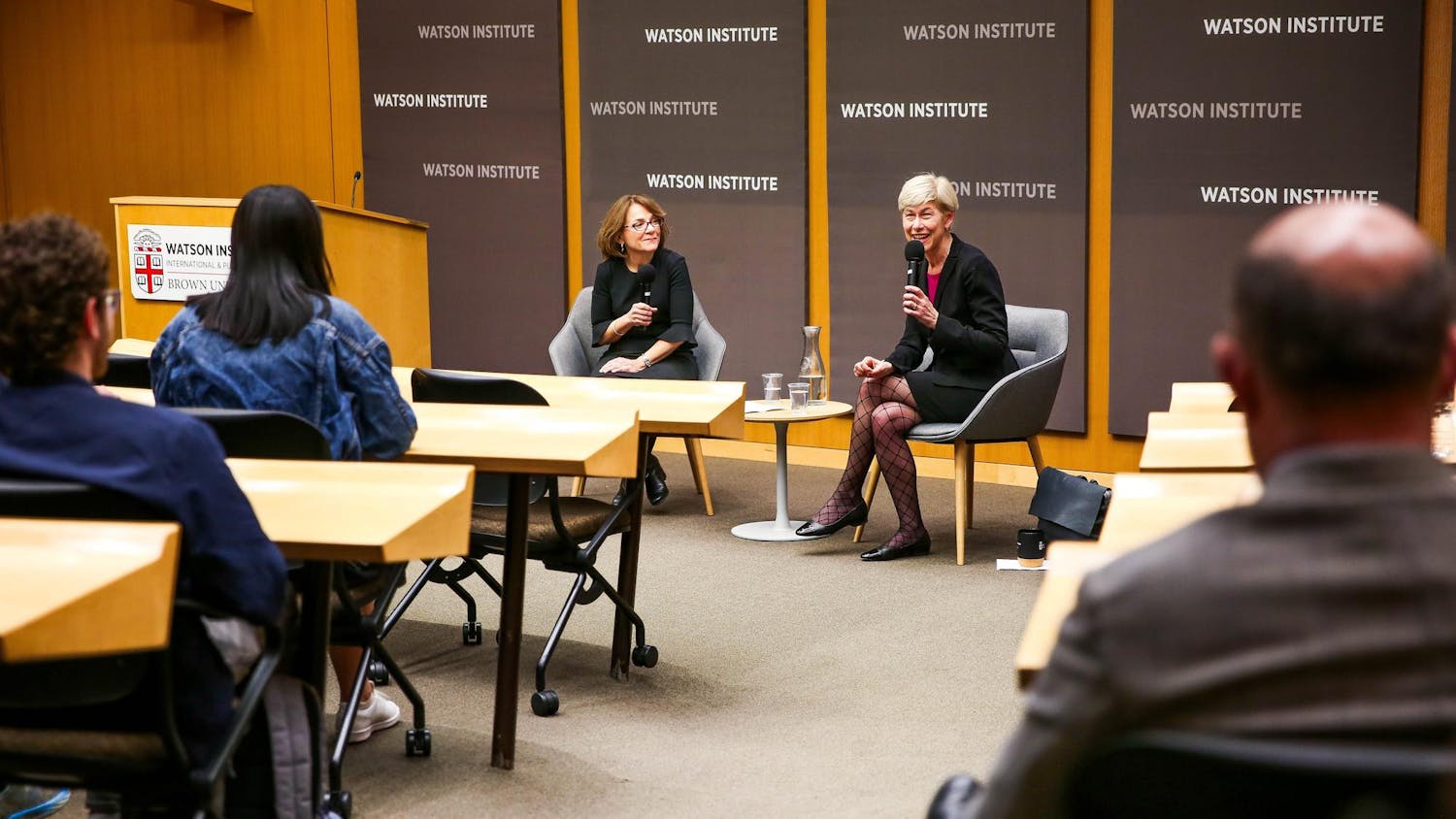Graduate students responded to President Christina Paxson’s P’19 Sept. 21 community-wide email announcing the results of a campus-wide sexual assault survey, expressing disappointment that she did not highlight the various ways graduate students are affected by sexual assault.
While there were areas of overlap in undergraduate and graduate student responses to the survey, the letter points out several prominent statistics unique to graduate students not mentioned in Paxson’s letter.
The letter’s signatories include the Graduate Student Council, the Graduate Women in Science and Engineering executive board, the Graduate Students of Color Collective and the Medical Student Health Council. Paxson has since replied to the letter, though her response has not been made public.
In line with the suggestions made in the letter, the Title IX Office is working on improvements — such as a unified complaint process — tailored in part to graduate students.
Faculty harassment
Of the 48.2 percent of graduate students who reported being sexually harassed, 28.3 percent reported the harassment coming from faculty, according to the Association of American University’s Campus Climate Survey on Sexual Assault and Sexual Misconduct.
In comparison, only 4.9 percent of the 71 percent of undergraduates reporting sexual harassment said they experienced it from a faculty member.
“Faculty, whether they are aware of it or not, have an immense amount of power over graduate and medical students,” said Sara Matthiesen, a postdoctoral fellow in American studies and a member of the Task Force on Sexual Assault.
Faculty “are often our advisors and points of contact for academia beyond Brown,” said Joel Simunduch GS, president of the Graduate Student Council.
Only 11.4 percent of graduate students experiencing harassment reported it to the University.
Seventeen percent of graduate students did not report because they did not want the person to get into trouble, and 18.3 percent did not report because they feared negative social consequences.
“Faculty may take advantage of the power they have,” Matthiesen said, adding that graduate students often depend upon faculty in their department to publish papers with them or write their letters of recommendation.
This pressing statistic presents a further need for a universal complaint and resolution process for cases involving students, faculty and staff as either complainants or respondents, Matthiesen said.
A universal process
Historically, the University has used a separate process for cases involving faculty and staff.
When a student brings a case against a faculty or staff member, the investigation is turned over to Liza Cariaga-Lo, deputy Title IX coordinator for faculty and vice president for academic development, diversity and inclusion, Matthiesen said.
Cariaga-Lo is responsible for investigating the case or delegating that responsibility to an external investigator, Matthiesen said. Cariaga-Lo then turns the results of that investigation over to Provost Rick Locke P’17, who makes a decision about the finding of responsibility and the sanctions against parties found responsible.
“Two people who have an administrative position know about the case, and one person ultimately makes a decision about the case,” Matthiesen said.
Many graduate students feel that the “deck is stacked against them” in this process, said Amanda Walsh, Title IX program officer. “Some have suggested a process that would allow the Title IX Council to also see the report,” Walsh said, though she added that the final decision would remain with Locke.
“The problem in creating a centralized process is recognizing that the rights of students are very different from faculty and staff members,” Walsh said. Factors like faculty governance and employment laws may create complications in deciding upon an appropriate sanction, she said.
“The closer we get to a unified process, the more likely graduate and medical students will be to participating in the process,” Matthiesen said.
Resources on campus
Of graduate students who did not report experiencing harassment to the University, 7.9 percent did so because they did not know where to go or whom to tell, whereas 5.9 percent of undergraduates cited the same reasoning.
As many graduate students live off campus, they may not feel the hours or locations of resources are as accessible, Walsh said.
“The hours of (Counseling and Psychological Services), which might be very conducive to an undergraduate who lives on campus, might not be for a graduate student who lives off campus and might prefer to go at night or on the weekends,” Walsh said. Graduate students living off campus may also be more inclined to turn toward community psychiatrists or hospitals when dealing with issues of sexual assault or harassment, she said.
Many graduate students hold the misconception that resources such as CAPS, the Sexual Harassment and Assault Resources and Education advocate and the Office of the Chaplains and Religious Life “are undergraduate-focused and aren’t open to graduate and medical school students,” Matthiesen said.
While the Title IX Office, CAPS and the SHARE advocate are available to all students, certain features may make them less appealing to graduate students, Walsh said.
Matthiesen said she hopes to utilize the GSC’s newsletter — launched this semester — to remind students of access to resources. She said she will also encourage department managers of each program to send emails to their students explaining the resources to which graduate and medical students are entitled.
SHARE Advocate Alana Sacks has also made herself available to students by attending several graduate and medical school events, Walsh said.
Both CAPS and the SHARE offices are currently under strain due to high demand, and publicizing these resources could increase that strain even further, Walsh said.
“The more reporting that happens and the more students who access these resources, the more robust these resources need to be,” she said.
Orientation
Nearly 71 percent of graduate students who reported experiencing harassment noted that it involved sexual remarks, insulting jokes or stories. Approximately 44.4 percent reported someone making inappropriate comments regarding their body, appearance or sexual activity.
Title IX policy changes have focused in part on prevention, Walsh said, adding that the University implemented a Title IX session during graduate student orientation for the first time this year.
The session — held as a panel with Walsh, Cariaga-Lo, Sacks and several other administrators — outlined the Title IX rights and resources available to students, said Beverly Larson, communications director of the Graduate School and Office of the Vice President for Research.
This year, 69 percent of graduate students attended the orientation, Larson said. While 77 percent of graduate students attended last year’s orientation, the overall number of attendees remained relatively consistent due to population growth, she added.
An online training program in the summer acquaints graduate students with not only the University’s Title IX policy, but also the Academic and Student Codes of Conduct, she added.
While there exists an online training program for faculty and staff — and now first-years — there is not one for graduate students, Walsh said.
The Title IX Office is currently developing a comprehensive resource “from the ground up” tailored toward graduate students, she said. An online module and additional workshops specific to departments are also under consideration, she added.




